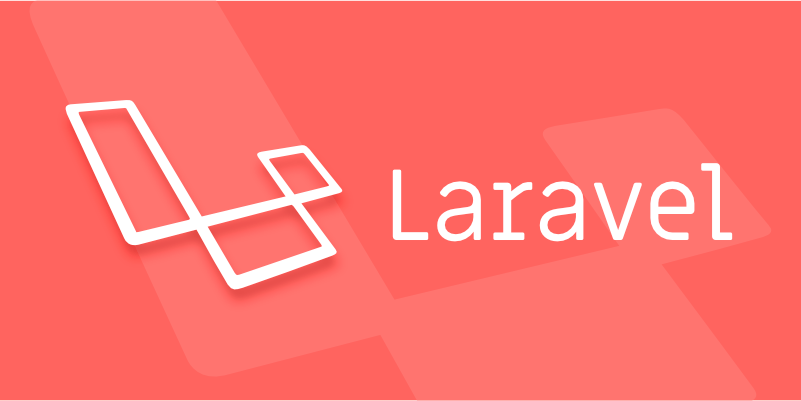Strategies for optimizing Laravel application performance
Jul 09, 2025 am 03:00 AMLaravel performance optimization can improve application efficiency through four core directions. 1. Use the cache mechanism to reduce duplicate queries, store infrequently changing data through Cache::remember() and other methods to reduce database access frequency; 2. Optimize database from the model to query statements, avoid N 1 queries, specifying field queries, adding indexes, paging processing and reading and writing separation, and reduce bottlenecks; 3. Use time-consuming operations such as email sending and file exporting to queue asynchronous processing, use Supervisor to manage workers and set up retry mechanisms; 4. Use middleware and service providers reasonably to avoid complex logic and unnecessary initialization code, and delay loading of services to improve startup efficiency.

Laravel is a powerful and development-friendly framework, but if not optimized, applications may slow down in scenarios with high concurrency or high data volumes. The core of performance optimization is to reduce unnecessary resource consumption, improve response speed, and make rational use of cache and asynchronous processing.

1. Use the cache mechanism to reduce duplicate queries
Laravel provides a rich caching system (such as Redis and Memcached), which can effectively reduce the frequency of database access. For some data that does not change frequently, such as static page content, configuration information, popular article lists, etc., it is recommended to use cache to store results.

- Use
Cache::remember()orCache::rememberForever()to encapsulate time-consuming operations - Control cache expiration time to avoid data outdated affecting user experience
- Integrate client cache in API interfaces with ETag or Last-Modified
For example:
$users = Cache::remember('user_list', 60, function () {
return User::all();
});2. Database optimization: from model to query statement
Databases are often the main source of performance bottlenecks in Laravel applications. It can be optimized through the following aspects:

- Avoid N1 query problems : preload associations
with() - Only the required fields : use
select()to specify the field instead of* - Index optimization : Add appropriate indexes to frequently queried fields
- Paginate processing of large data volume : use
paginate()instead of getting all data at once - Read and write separation : If the business volume is large, consider configuring multiple database connections to achieve read and write separation
3. Asynchronous tasks and queue processing
Some operations do not need to be completed immediately or have a long execution time, so they should be placed in the queue for asynchronous processing. Laravel's queue system supports multiple drivers (such as Redis, Beanstalkd, database, etc.).
Tasks suitable for queueing include:
- Send email or text messages
- Image processing or file export
- Logging or third-party service calls
Ensure timely consumption of tasks by configuring Supervisor to manage queue workers. At the same time, a failed retry mechanism is set to avoid task loss due to temporary errors.
4. Rational use of middleware and service providers
Laravel's middleware and service providers are very flexible, but they can also affect performance if used improperly. for example:
- Don't do complex logic or database queries in middleware
- Try to delay binding service providers to avoid loading too many classes at startup
- Use
deferlazy loading service and register only when it is actually used
Also, regularly check your AppServiceProvider and other custom service providers to see if there is unnecessary initialization code.
Basically that's it. Laravel performance optimization is actually not complicated, but details are easy to ignore. As long as you start from cache, database, queue and structural design, most projects can achieve significant improvements.
The above is the detailed content of Strategies for optimizing Laravel application performance. For more information, please follow other related articles on the PHP Chinese website!

Hot AI Tools

Undress AI Tool
Undress images for free

Undresser.AI Undress
AI-powered app for creating realistic nude photos

AI Clothes Remover
Online AI tool for removing clothes from photos.

Clothoff.io
AI clothes remover

Video Face Swap
Swap faces in any video effortlessly with our completely free AI face swap tool!

Hot Article

Hot Tools

Notepad++7.3.1
Easy-to-use and free code editor

SublimeText3 Chinese version
Chinese version, very easy to use

Zend Studio 13.0.1
Powerful PHP integrated development environment

Dreamweaver CS6
Visual web development tools

SublimeText3 Mac version
God-level code editing software (SublimeText3)

Hot Topics
 What are policies in Laravel, and how are they used?
Jun 21, 2025 am 12:21 AM
What are policies in Laravel, and how are they used?
Jun 21, 2025 am 12:21 AM
InLaravel,policiesorganizeauthorizationlogicformodelactions.1.Policiesareclasseswithmethodslikeview,create,update,anddeletethatreturntrueorfalsebasedonuserpermissions.2.Toregisterapolicy,mapthemodeltoitspolicyinthe$policiesarrayofAuthServiceProvider.
 What is the purpose of the artisan command-line tool in Laravel?
Jun 13, 2025 am 11:17 AM
What is the purpose of the artisan command-line tool in Laravel?
Jun 13, 2025 am 11:17 AM
Artisan is a command line tool of Laravel to improve development efficiency. Its core functions include: 1. Generate code structures, such as controllers, models, etc., and automatically create files through make: controller and other commands; 2. Manage database migration and fill, use migrate to run migration, and db:seed to fill data; 3. Support custom commands, such as make:command creation command class to implement business logic encapsulation; 4. Provide debugging and environment management functions, such as key:generate to generate keys, and serve to start the development server. Proficiency in using Artisan can significantly improve Laravel development efficiency.
 What are controllers in Laravel, and what is their purpose?
Jun 20, 2025 am 12:31 AM
What are controllers in Laravel, and what is their purpose?
Jun 20, 2025 am 12:31 AM
The main role of the controller in Laravel is to process HTTP requests and return responses to keep the code neat and maintainable. By concentrating the relevant request logic into a class, the controller makes the routing file simpler, such as putting user profile display, editing and deletion operations in different methods of UserController. The creation of a controller can be implemented through the Artisan command phpartisanmake:controllerUserController, while the resource controller is generated using the --resource option, covering methods for standard CRUD operations. Then you need to bind the controller in the route, such as Route::get('/user/{id
 How can PHP's performance be profiled and optimized?
Jun 14, 2025 am 12:21 AM
How can PHP's performance be profiled and optimized?
Jun 14, 2025 am 12:21 AM
TooptimizePHPperformance,useprofilingtoolslikeXdebugorBlackfiretoidentifybottlenecks,optimizeautoloadingwithcomposerinstall--optimize-autoloader,reduceunnecessarydependencies,speedupdatabasequeriesbyavoidingN 1issuesandaddingindexes,andenableOPcachef
 How do I use Laravel's validation system to validate form data?
Jun 22, 2025 pm 04:09 PM
How do I use Laravel's validation system to validate form data?
Jun 22, 2025 pm 04:09 PM
Laravelprovidesrobusttoolsforvalidatingformdata.1.Basicvalidationcanbedoneusingthevalidate()methodincontrollers,ensuringfieldsmeetcriterialikerequired,maxlength,oruniquevalues.2.Forcomplexscenarios,formrequestsencapsulatevalidationlogicintodedicatedc
 Caching Strategies | Optimizing Laravel Performance
Jun 27, 2025 pm 05:41 PM
Caching Strategies | Optimizing Laravel Performance
Jun 27, 2025 pm 05:41 PM
CachinginLaravelsignificantlyimprovesapplicationperformancebyreducingdatabasequeriesandminimizingredundantprocessing.Tousecachingeffectively,followthesesteps:1.Useroutecachingforstaticrouteswithphpartisanroute:cache,idealforpublicpageslike/aboutbutno
 What is the .env file in Laravel, and how do I use it?
Jun 22, 2025 am 01:03 AM
What is the .env file in Laravel, and how do I use it?
Jun 22, 2025 am 01:03 AM
The .env file is a configuration file used in the Laravel project to store environment variables. It separates sensitive information from code and supports multi-environment switching. Its core functions include: 1. Centrally manage database connections, API keys and other configurations; 2. Call variables through env() or config() functions; 3. After modification, the configuration needs to be refreshed before it takes effect; 4. It should not be submitted to version control to prevent leakage; 5. Multiple .env files can be created for different environments. When using it, you should first define variables and then call them in conjunction with configuration file to avoid direct hard coding.
 What is the Eloquent ORM in Laravel?
Jun 22, 2025 am 09:37 AM
What is the Eloquent ORM in Laravel?
Jun 22, 2025 am 09:37 AM
EloquentORMisLaravel’sbuilt-inobject-relationalmapperthatsimplifiesdatabaseinteractionsusingPHPclassesandobjects.1.Itmapsdatabasetablestomodels,enablingexpressivesyntaxforqueries.2.Modelscorrespondtotablesbypluralizingthemodelname,butcustomtablenames






